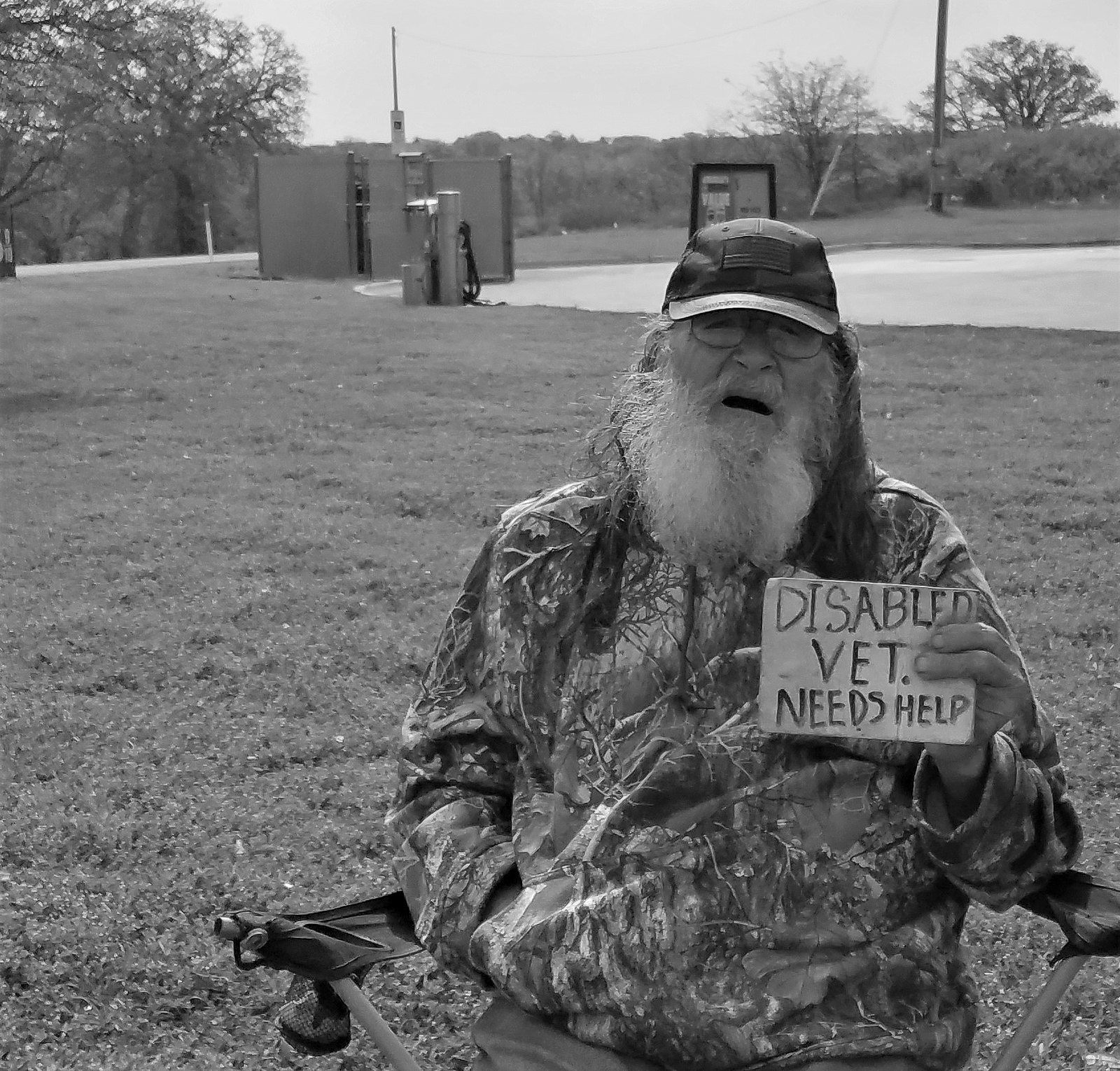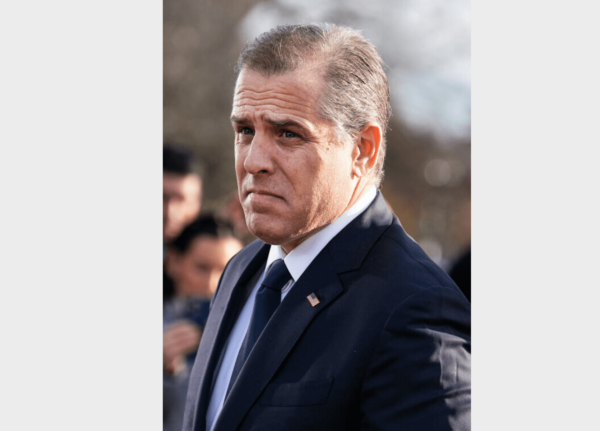By Kathleen McGrory and Neil Bedi
This story was originally published by ProPublica. ProPublica is a Pulitzer Prize-winning investigative newsroom. Sign up for The Big Story newsletter to receive stories like this one in your inbox.
A veteran with a known history of suicidal thoughts showed up at a St. Louis hospital before dawn one morning and was left unmonitored in an exam room for hours.
Another was deemed at risk of suicide by a hospital psychiatrist in Washington, D.C., then forcibly discharged, even as he tried to stay, by the same hospital’s emergency department.
Another still in Pittsburgh was assigned a behavioral health nurse who failed to complete thorough suicide screenings or review his suicide safety plan, and didn’t follow up when he said he wished he was dead.
In all three cases, independent inspectors documented serious failures by the Department of Veterans Affairs. And in all three cases, the veterans involved went on to kill themselves or other people.
The lapses were similar to ones examined by ProPublica last week in an investigation of the VA’s handling of two veterans with serious mental disorders. Both suffered for years with inadequate care from the same clinic in Northern California, they told reporters. Their stories ended in tragedy.
The problems appear to be systemic. Over and over, the hospitals and clinics in the VA’s sprawling health care network have fallen short when it comes to treating people with mental illness.
That conclusion emerges from a ProPublica review of all of the reports published by the VA’s inspector general since 2020. That includes 162 regular surveys of facilities and 151 investigations that were triggered by a complaint or call to the office on a wide variety of alleged health care problems.
Issues with mental health care surfaced in half of the routine inspections. Employees botched screenings meant to assess veterans’ risk of suicide or violence; sometimes they didn’t perform the screenings at all. They missed mandatory mental health training programs and failed to follow up with patients as required by VA protocol.
One in 4 of the reports stemming from calls or complaints detailed similar breakdowns. In the most extreme cases, facilities lost track of veterans or failed to prevent suicides under their own roofs.
Sixteen veterans who received the substandard care killed either themselves or other people, the review revealed. An additional five died for reasons related to the poor care, such as a bad drug interaction that the reports say could have been prevented. Twenty-one such deaths is a meaningful count even for a health care system that has more than 9 million people enrolled, in the view of Charles Figley, a Tulane University professor and expert in military mental health. The VA has struggled with mental health care for decades, he said. “It’s a national disgrace.”
For grieving family members, it is incomprehensible. “It was never my expectation that [the VA was] going to solve his problems,” said Colin Domek, the son of the veteran in Pittsburgh. “My expectations were that someone who was saying ‘help me’ would receive some kind of help.”
The inspector general reports reviewed by ProPublica have limitations. The individual investigations can be narrow. The reports offer only broad suggestions as to whether individuals should be held accountable for breakdowns and provide little sense of whether they actually were. Even together, they don’t capture the full reality of the VA’s 1,300 health care facilities. But they do start to assemble a meaningful picture of the system’s most chronic shortcomings when it comes to treating people with mental illness.
The VA declined requests for an interview for this story. In a statement to ProPublica, VA press secretary Terrence Hayes said “there is nothing more important to VA than providing high-quality mental health care to Veterans” and that the agency was “grateful” to the inspector general’s office for its oversight. He noted that last year, more than 80% of veterans who participated in VA surveys reported being satisfied with the mental health care they received through the agency.
In a separate statement, VA Inspector General Michael Missal said, “Our reports have repeatedly illustrated that it is critical that [Veterans Health Administration] leaders remain vigilant to problems, ensure care is coordinated, and take swift, responsive actions that address root causes and promote accountability.”
The VA’s health care system is the nation’s largest. The agency operates about 170 medical centers and 1,100 outpatient sites, and it provides counseling services at some 300 facilities known as vet centers. In the last fiscal year, the VA provided mental health services to about 2 million veterans, according to agency figures.
The system has notable strengths. The VA has played an important role in developing treatments for conditions such as post-traumatic stress disorder and traumatic brain injury, and provides critical training opportunities for psychiatrists, psychologists and social workers nationwide.
But the number of suicides among veterans has remained stubbornly high, ticking up to 6,392 in 2021, the most recent year in agency statistics. And acts of violence by veterans with mental illnesses have continued making news, including two mass shootings in Atlanta last year alone.
Experts told ProPublica the failures revealed in the inspector general reports point to broad problems, including inadequate mental health staffing, outdated policies and the inability to enforce high standards across a large, decentralized health care network.
“It’s a very sad thing,” said M. David Rudd, a psychology professor at the University of Memphis for whom the Rudd Institute for Veteran and Military Suicide Prevention is named. “You can sit here today and predict with great accuracy how many deaths there are going to be over the next five years. Yet there are unlikely to be any meaningful, significant changes.”
When there are allegations of patient care issues, mistakes or policy violations inside a VA health care facility, it is often up to the agency’s independent inspector general to investigate. The office can then write a report explaining what happened and offering recommendations for improvement. Facilities typically follow the recommendations.
The inspector general’s reports don’t name the veterans or any doctors or nurses — a deliberate choice intended to protect their privacy. They obscure gender and specific dates, too. In several cases, however, ProPublica was able to match details from the reports with information contained in news stories or lawsuits and interview the veteran’s relatives.
One of those cases involved Kenneth Hagans, a 60-year-old father of four who served as a private in the Army in the early 1980s.
In September 2021, Hagans showed up at the John Cochran Veterans Hospital in St. Louis complaining of bladder problems and depression, records show. By then, he had been receiving care at the facility for more than two decades and treated for substance abuse and suicidal thoughts.
The nurse who first saw Hagans that morning determined he was not at risk of self-harm. But instead of using the computer to call up a questionaire to assess his risk of suicide, the nurse recited the questions from memory, then left Hagans unmonitored in an exam room.
The nurse claimed to have notified the on-call physician, who was “resting” on a stretcher in another exam room when Hagans arrived, according to the inspector general report on the case. But video footage did not support that claim, the report said. A second nurse alerted the physician an hour after Hagans’ arrival. But the physician was feeling the effects of a vaccine and slow to respond, the physician told investigators.
An hour after that, Hagans was found dead in the exam room. He had used a cord to take his own life.
The inspector general report, which was published in June, found that the nurse had failed to monitor Hagans and that the nurse and physician were responsible for a delay in his care. It also raised questions about the quality of the suicide screening Hagans received. (Later, when asked by investigators to recall the questions on the assessment by memory, the nurse could not, records show.)
Additionally, the report drew attention to an email sent by an emergency department leader regarding the inspector general’s investigation into Hagans’ death. “Everybody needs to know this is NOT the opportunity to air grievances,” the leader wrote to a staff physician. “The [inspector general] will be trolling for evidence of leadership and administrative malfeasance that allowed a veteran to kill himself in our [emergency department]. Appropriate responses to direct questions are: yes, no, I don’t know, and I don’t remember. BOOM!”
The inspector general recommended that the medical center standardize its processes for suicide screenings and monitoring patients — and that local leaders in St. Louis investigate the possible interference in the inspection. In a written response to the report, facility director Candace Ifabiyi did not challenge any of the inspector general’s findings and said she agreed with the recommendations.
Hagans grew up as one of eight siblings in Hammond, Louisiana. As a kid, he hopped onto trucks bound for New Orleans and hung out in the French Quarter. He saw an opportunity in the Army, his son Graie told ProPublica. But in the years that followed, he struggled with drug addiction and homelessness. He was in and out of his children’s lives.
Hagans never talked about any traumatic experiences he had while serving in the military, Graie said. But in 2017, he started getting help for post-traumatic stress disorder stemming from that period in his life. The treatment, which he got through the VA, was making a difference, Graie said. “He was learning about the impact of PTSD on his life,” he said. “Some things were making more sense about his behavior.”
Graie was stunned to learn the circumstances of his father’s death, he said. His call with a hospital official that day raised questions. Shouldn’t the VA hospital system that treated his father for psychiatric issues have been familiar with his mental health history? Shouldn’t the staff have kept an eye on him?
Hagans’ death could have and should have been prevented, Graie contended. “There’s an institutional and structural failure if what happened to my dad can happen inside a VA hospital,” he said.
In a statement to ProPublica, the VA St. Louis Health Care System expressed its “deepest condolences to Mr. Hagans’ family and friends.” The statement added that health system leaders had established standard policies for suicide screenings and monitoring patients, and initiated “appropriate personnel action” for individuals involved in the case. The health system declined to share specific details.
Hagans’ case was not an anomaly, ProPublica’s review of records found. Many of the breakdowns in care involved problems with screenings for the risk of suicide and violence.
Screenings are simple; they generally entail asking a patient a few questions about their thoughts and actions to assess their potential of self-harm or violence. But research has shown they can help save lives.
Screenings played a key role in the case of Nicholas Domek, a former Army engineer and demolition expert whose three decades in the military included serving overseas in Operation Desert Storm and in the Army Reserves.
In 2018, Domek attempted suicide and was admitted to the Pittsburgh VA’s inpatient mental health unit. He also attempted to kidnap his former domestic partner and, in early 2019, was readmitted to the mental health unit for homicidal thoughts.
The VA gave Domek a designated behavioral health nurse practitioner; the two met monthly after his second hospitalization. The nurse practitioner documented Domek’s thoughts of suicide after each of their four visits, according to the inspector general report. But there was no evidence the nurse practitioner did a thorough suicide risk assessment or reviewed Domek’s suicide safety plan as protocol dictates.
Two weeks after Domek’s last meeting with the nurse practitioner, Domek killed the former domestic partner, Mary Jo Kornick. He then killed himself.
The nurse practitioner could not remember why no risk assessment was done, the report said. The inspector general determined the nurse practitioner had copied and pasted information from prior visits throughout his records, making them difficult to follow and interpret.
Domek’s son Colin told ProPublica the nurse practitioner should have done more. He said the nurse practitioner knew about his dad’s plans; he had been in the room when his father told the nurse practitioner he intended to kill both himself and Kornick, he said.
Colin Domek described his father as a hard worker who enjoyed fishing and geocaching, a recreational activity in which participants search for hidden objects outdoors. He loved being a soldier, Colin said, and the whole family took pride in his service. One year at Christmastime, they decorated their tree with tiny paratroopers. The family was on the local news when Domek deployed to Iraq.
More recently, though, Nicholas Domek had had his left leg amputated and struggled with depression, Colin said. He’d started seeing a mental health professional and trying medications. “In his mind, the VA was going to take care of him,” Colin said. “It was never a thought to see someone outside the VA. That was never on the table.”
The tragedy ravaged a second family. Kornick was a loving mother and grandmother who worked at a home for older people, her daughter Sherry Kornick told ProPublica. She loved to laugh and play pranks. She made up songs to make people smile.
She was killed the day before Mother’s Day. “I don’t even want to celebrate Mother’s Day” anymore, Sherry said, breaking down into tears. “And I realized it’s not fair to my kids who want to celebrate me.”
In its investigation, the inspector general determined the nurse practitioner had made similar missteps with at least seven other patients and had copied and pasted “significant sections of notes” from prior evaluations in 97% of the 143 patients’ health records it reviewed.
The report on the case recommended that the VA’s Pittsburgh health system consult with its human resources and legal teams to “determine whether personnel action [was] warranted.” The facility director agreed with the recommendation but noted the nurse practitioner retired in January 2022.
In a statement to ProPublica, the Pittsburgh health system said it was “devastated when [it] learned about the challenges Mr. Domek faced and took immediate action to prevent another Veteran from having a similar experience.” That included developing a refresher training program for suicide-risk evaluation and management as well as a new template for electronic health records.
Other VA facilities missed screens, too, ProPublica’s review found. At one Arizona hospital, a social worker didn’t screen a veteran who called to reestablish mental health care, instead referring the veteran for psychological diagnostic testing. The veteran wasn’t offered treatment for a month and later died by suicide. A South Carolina hospital didn’t do a suicide risk assessment on another veteran who was being released from its inpatient mental health unit as VA policy requires. That veteran also died by suicide.
There were other cases, too, in which veterans with serious behavioral health issues were overlooked or didn’t get the help they needed.
The VA Medical Center in Houston, for example, lost track of a veteran with chronic schizophrenia who sought treatment at the facility’s emergency room in 2020 for back pain. The veteran was found off-site four days later in cardiac arrest and died the next day, according to an inspector general report. In interviews with the investigators, hospital staff said the veteran had been shuttled between departments due to possible COVID-19 symptoms and then wandered off. In a statement to ProPublica, Houston health system leaders said the situation did not “represent the quality health care southeast Texas Veterans have come to expect from Houston VA” and that they had improved their COVID screening processes and trained employees on wandering patients.
At the VA Medical Center in Washington, D.C., a psychiatrist found a veteran with drug withdrawal symptoms to be at moderate risk of suicide and recommended in-patient treatment. The psychiatrist walked the veteran to the facility’s emergency room for follow-up. But doctors there didn’t read the psychiatrist’s notes and determined the veteran should be discharged. When the veteran refused to leave, an attending physician called the VA police and was heard saying the veteran could go shoot himself. The veteran died from a self-inflicted gunshot wound six days later.
Hospital leaders agreed with the findings in the inspector general report and noted that the physician who made the insensitive remark was replaced as a contract provider. They told ProPublica in a statement that a second physician on contract had resigned from the facility.
Experts say such missteps often stem from the fact that employees are overworked and undertrained.
Demand for mental health services within the VA has been surging, and the system has long endured mental health provider shortages. A survey published by the inspector general in August found that more than three quarters of the VA’s 139 networks of hospitals and associated clinics had reported “severe” shortages of psychiatrists, psychologists or both.
Separately, a report from the Government Accountability Office from 2022 concluded that one-fifth of all large VA health care facilities failed to meet requirements that mental health providers be available within primary care settings to help assess veterans and follow up with their care. The facilities said “persistent staffing challenges” were largely to blame.
The VA is far from the only health care organization that has had difficulty filling critical behavioral health positions amid a national shortage of providers in recent years. But Carl Castro, a professor at the University of Southern California and director of its Center for Innovation and Research on Veterans and Military, said the VA in particular has struggled to compete for providers.
“The system doesn’t pay them enough money,” he said. “It works them to the bone. That’s why it is hard to recruit people.”
Indeed, in exit interviews, VA psychologists cited insufficient pay, too much work and job stress as among the top five reasons they left their positions, according to data published by the VA in October.
The VA, for its part, has steadily increased its funding for mental health over time, federal budget data shows. In 2022, the figure surpassed $13 billion, up from about $6 billion a decade earlier. In 2022, mental health was about 13% of the total health care budget. In 2012, it was about 12%.
Agency leaders have acknowledged that growing the mental health workforce is a priority. They recently announced a targeted hiring initiative intended to bring 5,000 new mental health professionals into the system over the next five years. The agency also boosted the pay range available for staff psychiatrists last year and is offering more flexible schedules to employees to help battle burnout, it said.
“We are fully engaged in a multi-faceted strategy to attract qualified candidates, leverage all flexibilities and incentives to meet the workforce needs, and monitor staffing ratios and other data regularly to help inform facility staffing priorities and decisions,” the agency said in a statement to ProPublica.
Aside from staffing issues, experts said the VA struggles with consistency across its huge system, which is broken down into 18 regional networks and dozens of smaller hospital systems, each with its own leaders and policies. “If you’ve seen one VA facility,” said Alyssa Hundrup, a director on the Government Accountability Office’s health care team, “you’ve seen only one VA facility.”
The national policies alone have generated confusion, the reports showed. According to the inspector general’s office, two of the handbooks describing the mental health policies all VA facilities must follow had been outdated for years. One was missing the agency’s most recent guidance on managing patients at risk of suicide or suffering from PTSD or major depressive order.
Dr. Sandro Galea, dean of the Boston University School of Public Health who chaired a congressionally mandated committee on the treatment of PTSD in military and veteran populations a decade ago, said the individual tragedies highlight the need for a wholesale look at the VA’s mental health care system “to identify gaps and holes.”
“That needs to happen,” Galea said. “It’s clearly time.”
Emma Dash is sure something needs to be done. Her husband, a 33-year-old Army veteran named Brieux Dash, was struggling with PTSD when he was involuntarily committed to West Palm Beach VA Medical Center in 2019. He took his own life during his stay.
Dash had been a wheeled vehicle mechanic in the Army from 2006 until 2015. He deployed to Iraq twice, his Army records show. When he returned home the second time, he was different, Emma said. He would scream in the middle of the night. Sometimes, he erupted into violence in his sleep.
Emma, who worked in the West Palm Beach VA medical center’s pharmacy department, had her husband committed to the medical center’s inpatient mental health unit once before, she said. “It got him back to being him,” Emma recalled. So when he attempted suicide at home in 2019, she followed a similar course of action.
The VA’s inspector general later found that a nursing assistant who had been assigned to do patient safety checks every 15 minutes the day Brieux Dash died had also carried out other tasks contrary to unit protocol. In addition, video cameras that were supposed to help monitor patients hadn’t worked in years.
The findings shocked Emma, who had believed the facility was the best equipped to help her husband. She sued the VA in 2022 and settled for $5.75 million last year, an amount her lawyer characterized as “historic.”
In a statement to ProPublica, the West Palm Beach VA Medical Center said it installed sensor alarms and new surveillance cameras after Dash’s death and added a new checklist to address environmental risks for patients on inpatient mental health units. “Anytime a Veteran in our care dies by suicide,” the statement said, “it is heartbreaking.”
Emma Dash had a simple message for the VA, she told ProPublica: “Do better!”
ProPublica is a Pulitzer Prize-winning investigative newsroom. Sign up for The Big Story newsletter to receive stories like this one in your inbox. Republished with Creative Commons License (CC BY-NC-ND 3.0).







